Keyword
Oceans
13 record(s)
Type of resources
Available actions
Topics
Keywords
Contact for the resource
Provided by
Years
Formats
Representation types
Update frequencies
Status
Scale
panaceaKeywords
GEMET keywords
-
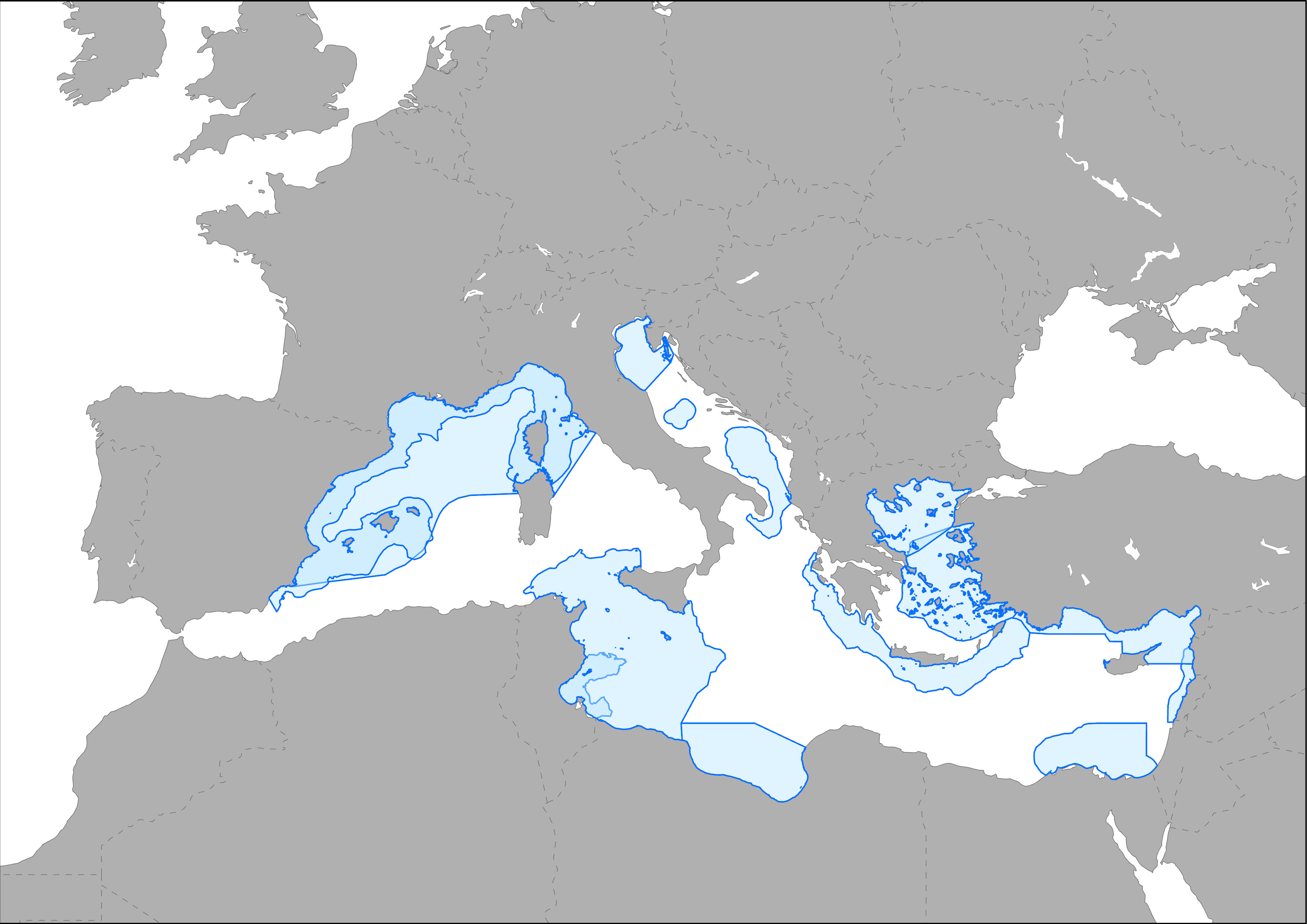
The EBSAs are special areas in the ocean that serve important purposes, in one way or another, to support the healthy functioning of oceans and the many services that it provides. These areas are recollected into MAPAMED which is a cartographic database of key information on Mediterranean Marine Protected Areas (MPAs) potential Other Effective área-based Conservation Measure (OECMs), and more broadly on sites of interest for marine conservation. It is developed and administered jointly by UNEP/MAP-SPA/RAC and the MedPAN Association. For detailed information, please consult the MAPAMED user manual (April 2021 version).
-
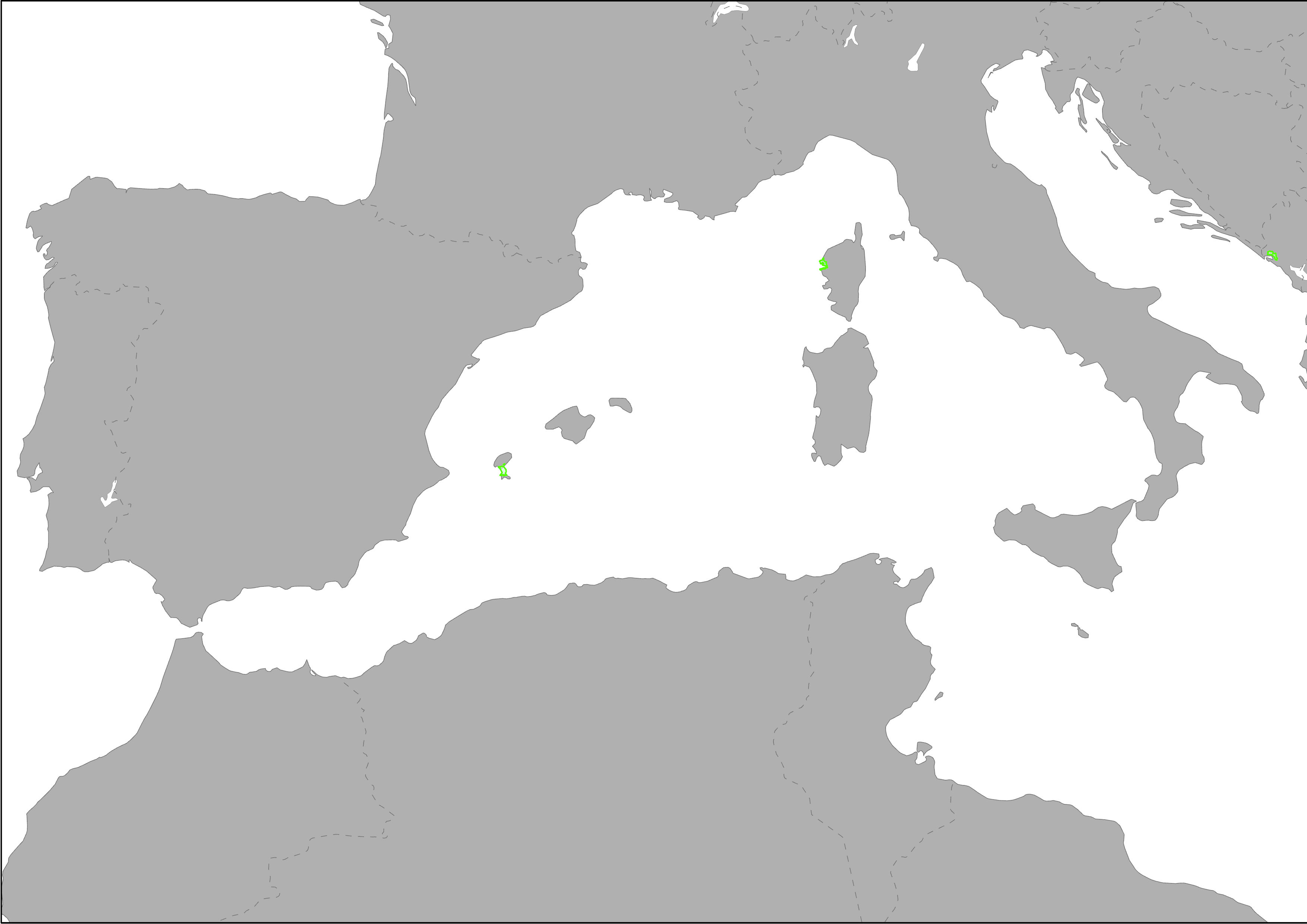
Heritage is our legacy from the past, what we live with today, and what we pass on to future generations. Our cultural and natural heritage are both irreplaceable sources of life and inspiration. The United Nations Educational, Scientific and Cultural Organization (UNESCO) seeks to encourage the identification, protection and preservation of cultural and natural heritage around the world considered to be of outstanding value to humanity. This is embodied in an international treaty called the Convention concerning the Protection of the World Cultural and Natural Heritage, adopted by UNESCO in 1972. What makes the concept of World Heritage exceptional is its universal application. World Heritage sites belong to all the peoples of the world, irrespective of the territory on which they are located. The natural marine heritage is recollected into MAPAMED which is a cartographic database of key information on Mediterranean Marine Protected Areas (MPAs) potential Other Effective área-based Conservation Measure (OECMs), and more broadly on sites of interest for marine conservation. It is developed and administered jointly by UNEP/MAP-SPA/RAC and the MedPAN Association. For detailed information, please consult the MAPAMED user manual (April 2021 version).
-

A Fisheries Restricted Area (FRA) is a geographically defined area in which some specific fishing activities are temporarily or permanently banned or restricted in order to improve the exploitation patterns and conservation of specific stocks as well as of habitats and deep-sea ecosystems. In the Mediterranean and the Black Sea, 1,760,000 km2 of sea habitats are protected by nine FRAs established by the GFCM. This includes one large deep-water FRA (1,730,000 km2) in which the use of towed dredges and trawl nets in all waters deeper than 1000 metres is banned to protect deep-sea benthic habitats. These areas are recollected into MAPAMED which is a cartographic database of key information on Mediterranean Marine Protected Areas (MPAs) potential Other Effective área-based Conservation Measure (OECMs), and more broadly on sites of interest for marine conservation. It is developed and administered jointly by UNEP/MAP-SPA/RAC and the MedPAN Association. For detailed information, please consult the MAPAMED user manual (April 2021 version).
-
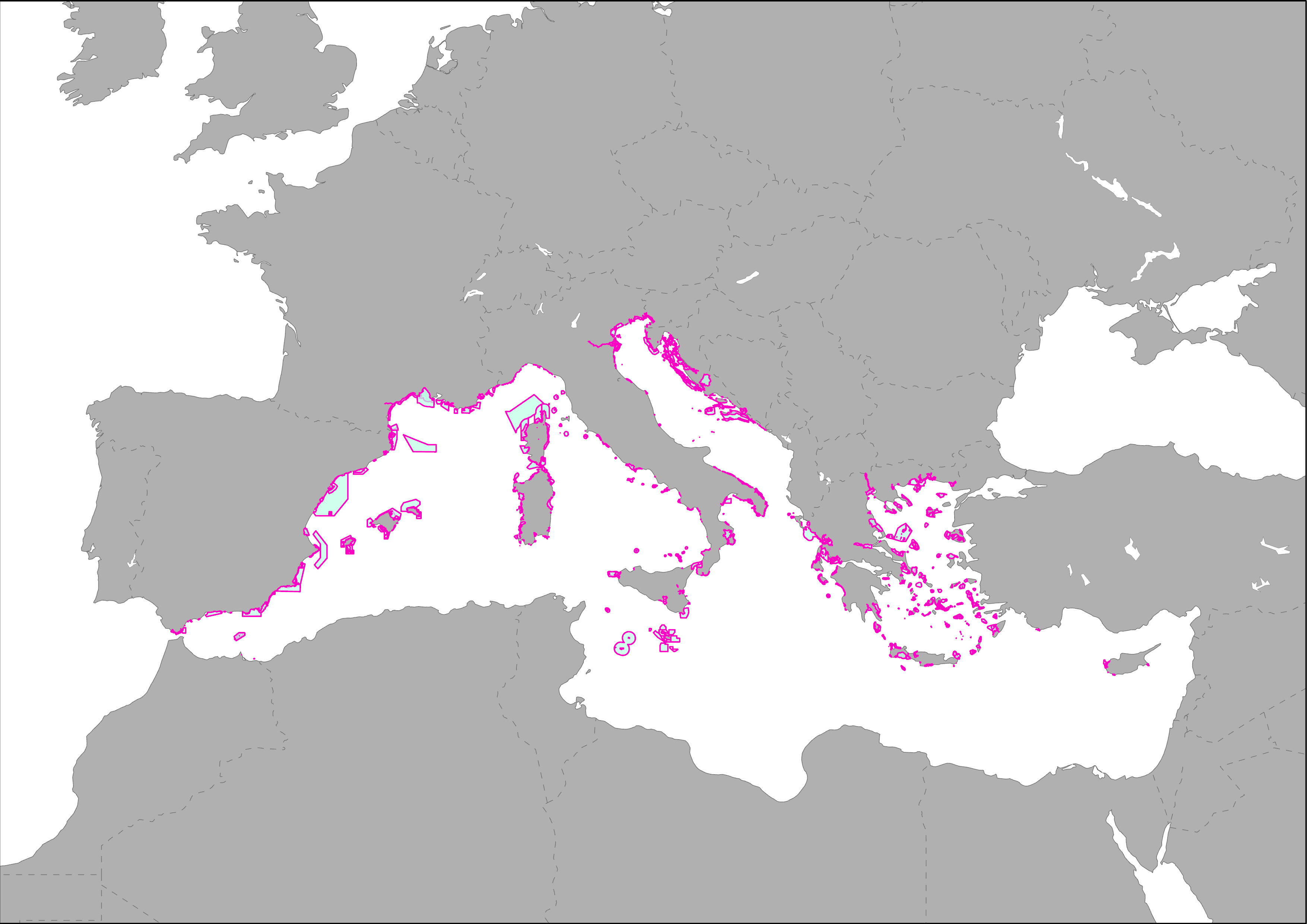
The EU has established a robust and ambitious policy framework to address the multiple challenges facing its marine environment and to ensure a more sustainable ecosystem-based approach to the use of its marine resources. The Habitats and Birds Directives, along with the Marine Strategy Framework Directive, are the environmental pillar of the wider Integrated Maritime Policy. They are also at the heart of the EU’s contribution to international efforts, including the four Regional Seas Conventions (HELCOM, OSPAR, Barcelona, Black Sea) and the Ocean Governance agenda. The total coverage of EU seas covered by marine protected areas has more than doubled in the last six years, primarily due to the expansion of the Natura 2000 network – the largest coordinated network of conservation areas in the world. The Habitats Directive lists nine marine habitat types and 16 species for which marine site designation is required, whilst the Birds Directive lists a further 60 bird species whose conservation requires marine site protection. To date (end 2018), more than 3150 marine Natura 2000 sites have been designated, which cover almost 10% of the total EU marine area (over 550,000 km2). These areas are recollected into MAPAMED which is a cartographic database of key information on Mediterranean Marine Protected Areas (MPAs) potential Other Effective área-based Conservation Measure (OECMs), and more broadly on sites of interest for marine conservation. It is developed and administered jointly by UNEP/MAP-SPA/RAC and the MedPAN Association. For detailed information, please consult the MAPAMED user manual (April 2021 version).
-
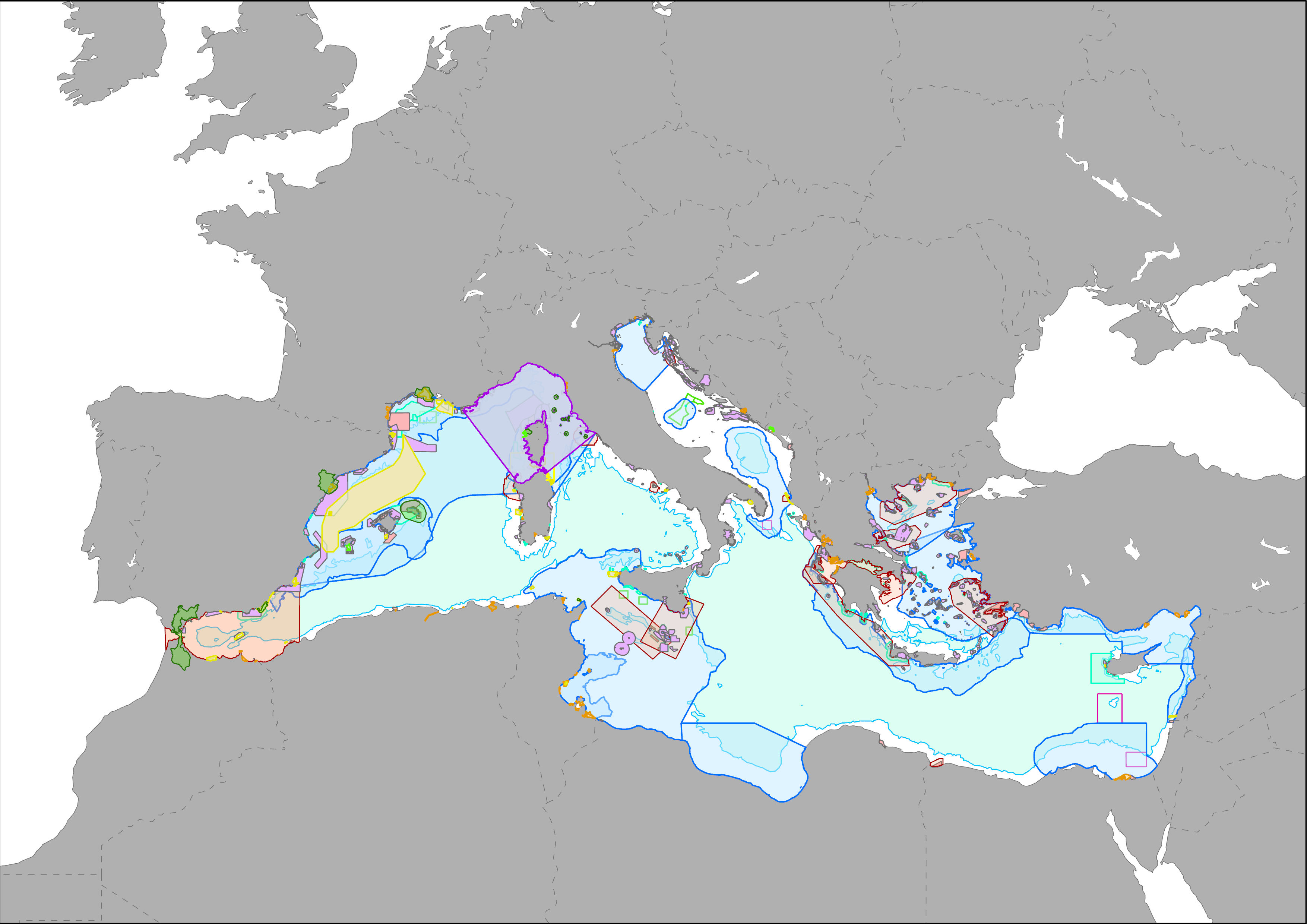
MAPAMED (MArine Protected Areas in the MEDiterranean) is a cartographic database of key information on Mediterranean Marine Protected Areas (MPAs), potential Other Effective area-based Conservation Measure (OECMs), and more broadly on sites of interest for marine conservation. It is developed and administered jointly by UNEP/MAP-SPA/RAC and the MedPAN Association. For detailed information, please consult the MAPAMED user manual (April 2021 version).
-

Under the Convention on Wetlands (Ramsar, 1971), each Contracting Party undertakes to designate at least one wetland site for inclusion in the List of Wetlands of International Importance. There are over 2,000 "Ramsar Sites" on the territories of over 160 Contracting Parties across the world. All Site information is provided by the Contracting Parties to the Convention. Responsibility for the accuracy and completeness of the data lies with the Administrative Authority of the Party that has added the Site to the List of Wetlands of International Importance. These areas are recollected into MAPAMED which is a cartographic database of key information on Mediterranean Marine Protected Areas (MPAs) potential Other Effective área-based Conservation Measure (OECMs), and more broadly on sites of interest for marine conservation. It is developed and administered jointly by UNEP/MAP-SPA/RAC and the MedPAN Association. For detailed information, please consult the MAPAMED user manual (April 2021 version).
-

Biosphere Reserve consists of a dynamic and interactive network of sites of excellence. It fosters the harmonious integration of people and nature for sustainable development through participatory dialogue; knowledge sharing; poverty reduction and human well-being improvements; respect for cultural values and society’s ability to cope with change - thus contributing to the 2030 Agenda and the Sustainable Development Goals (SDGs). Accordingly, the Network is one of the main international tools to develop and implement sustainable development approaches in a wide array of contexts. The Network of Biosphere Reserves promotes North-South and South-South collaboration and represents a unique tool for international co-operation through sharing knowledge, exchanging experiences, building capacity and promoting best practices. These areas are recollected into MAPAMED which is a cartographic database of key information on Mediterranean Marine Protected Areas (MPAs) potential Other Effective área-based Conservation Measure (OECMs), and more broadly on sites of interest for marine conservation. It is developed and administered jointly by UNEP/MAP-SPA/RAC and the MedPAN Association. For detailed information, please consult the MAPAMED user manual (April 2021 version).
-

The EU has established a robust and ambitious policy framework to address the multiple challenges facing its marine environment and to ensure a more sustainable ecosystem-based approach to the use of its marine resources. The Habitats and Birds Directives, along with the Marine Strategy Framework Directive, are the environmental pillar of the wider Integrated Maritime Policy. They are also at the heart of the EU’s contribution to international efforts, including the four Regional Seas Conventions (HELCOM, OSPAR, Barcelona, Black Sea) and the Ocean Governance agenda. The proposed sites are recollected into MAPAMED which is a cartographic database of key information on Mediterranean Marine Protected Areas (MPAs) potential Other Effective área-based Conservation Measure (OECMs), and more broadly on sites of interest for marine conservation. It is developed and administered jointly by UNEP/MAP-SPA/RAC and the MedPAN Association. For detailed information, please consult the MAPAMED user manual (April 2021 version).
-
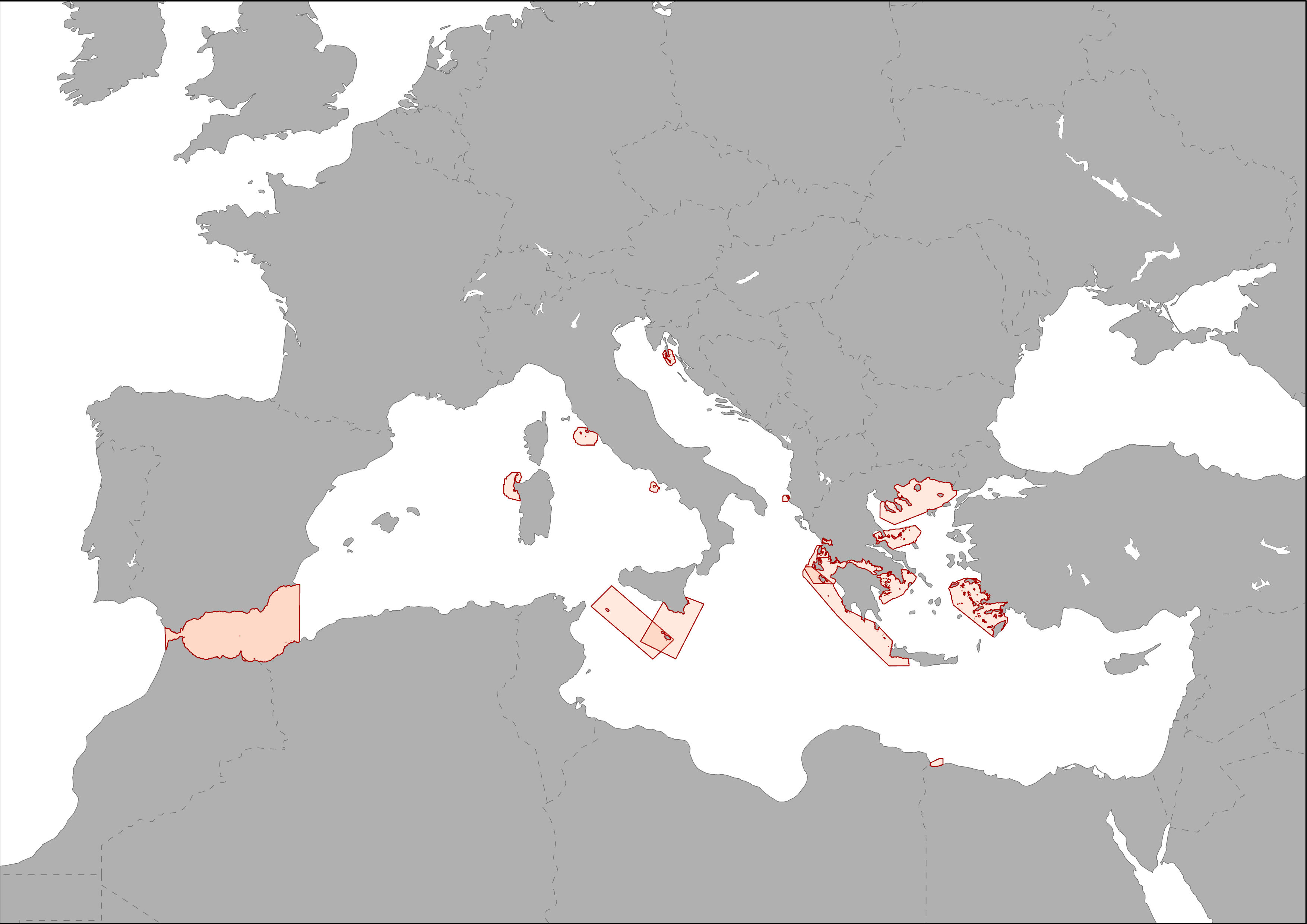
ACCOBAMS is working on the identification of new relevant of Cetaceans Critical Habitats (CCH) in the ACCOBAMS area, in order to propose appropriate threats management or spatial management measures. The identification is based on the overlapping of areas of interest for Marine Mammals (IMMAs) and mapping of anthropogenic threats. These areas are recollected into MAPAMED which is a cartographic database of key information on Mediterranean Marine Protected Areas (MPAs) potential Other Effective área-based Conservation Measure (OECMs), and more broadly on sites of interest for marine conservation. It is developed and administered jointly by UNEP/MAP-SPA/RAC and the MedPAN Association. For detailed information, please consult the MAPAMED user manual (April 2021 version).
-
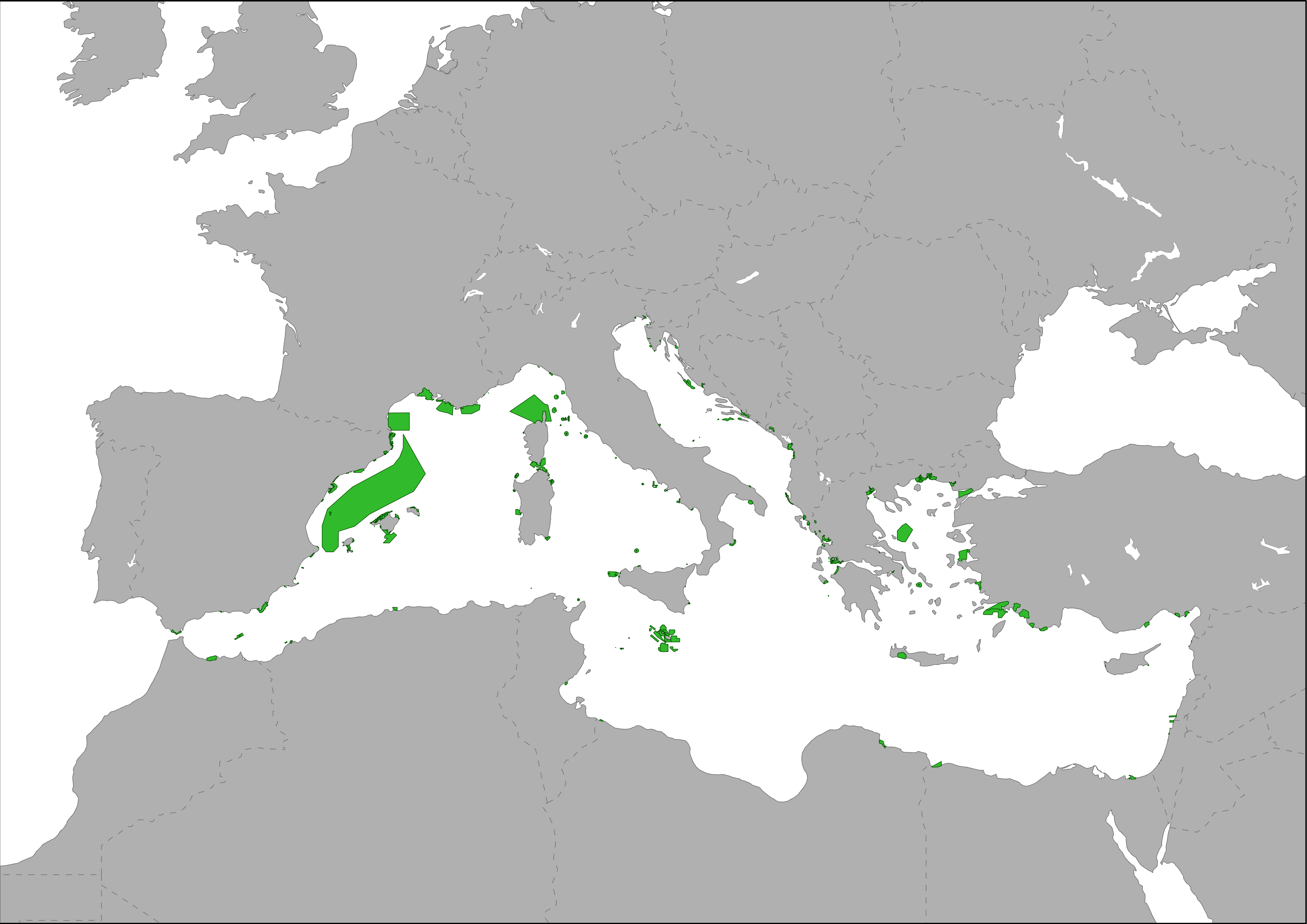
The global coverage of marine protected areas (MPAs) is 7.68%. The Global Ocean can be divided into areas within national jurisdiction (National Waters) and those in international waters (Areas Beyond National Jurisdiction (ABNJ)). MPAs can be more easily created by governments in national waters where there are dedicated legal systems in place. In ABNJ it is more difficult to create MPAs due to the complex legal framework in place. As such, the percentage of MPAs created within national waters is much higher than that for ABNJ. National waters represent 39% of the global ocean and at present, 17.86% of these waters are designated as protected areas. In contrast, only 1.18% of ABNJ, which makes up the remaining 61% of the global ocean, has been established as protected areas. At present, international discussions are underway to establish ways of simplifying the process to create MPAs in ABNJ. For more information on this, please see the DOALOS website. These areas are recollected into MAPAMED which is a cartographic database of key information on Mediterranean Marine Protected Areas (MPAs) potential Other Effective área-based Conservation Measure (OECMs), and more broadly on sites of interest for marine conservation. It is developed and administered jointly by UNEP/MAP-SPA/RAC and the MedPAN Association. For detailed information, please consult the MAPAMED user manual (April 2021 version).
